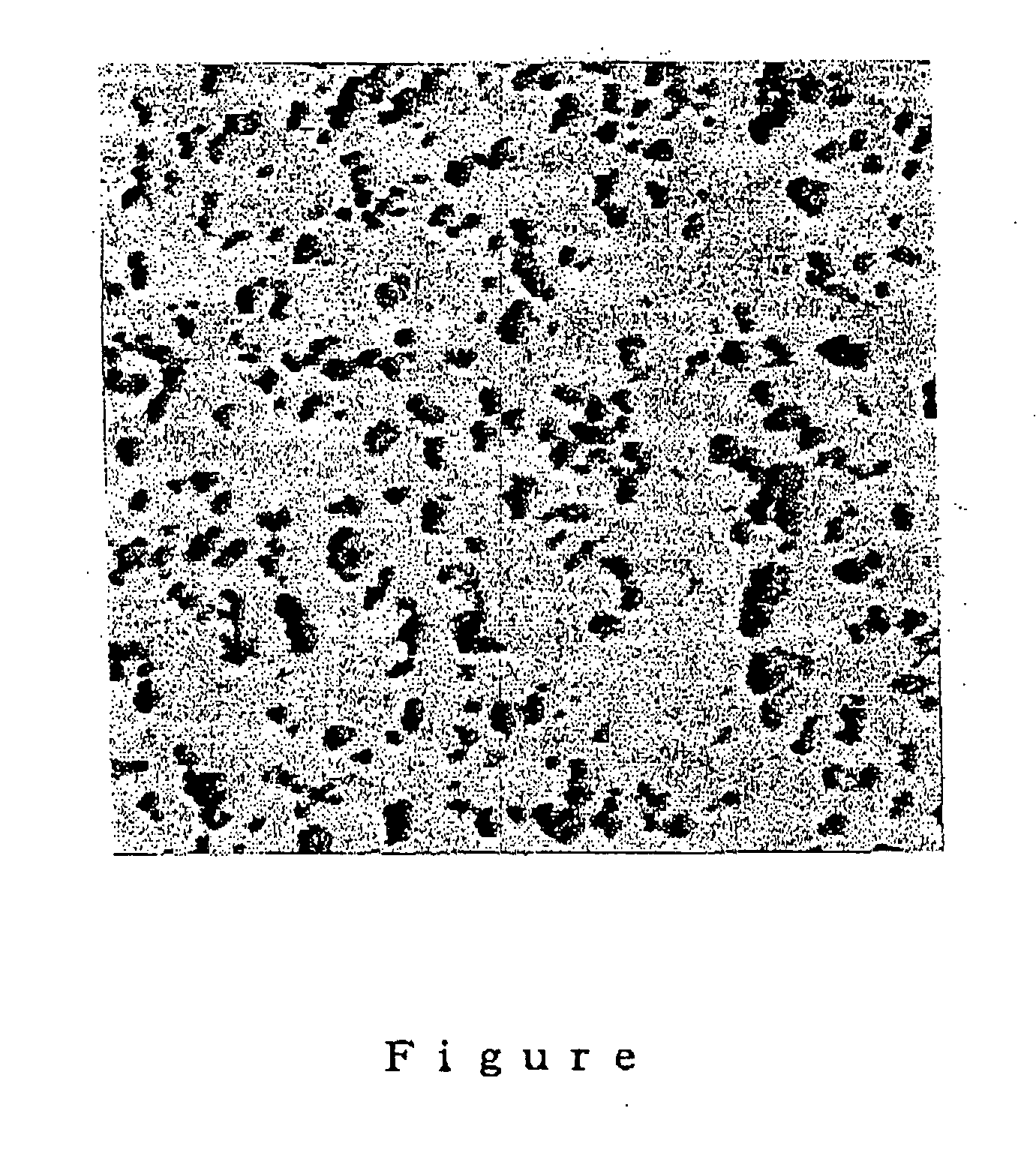Rubber hose material and rubber hose using the same
a technology of rubber hoses and hoses, which is applied in the direction of mechanical equipment, transportation and packaging, and other domestic objects, can solve the problems of stray currents, easy formation of local batteries, and high mounting rate of electrical components, and achieve excellent mechanical properties, excellent mechanical strength, and improved kneading properties
- Summary
- Abstract
- Description
- Claims
- Application Information
AI Technical Summary
Benefits of technology
Problems solved by technology
Method used
Image
Examples
examples 1 to 6
, Comparative Examples 1 to 5
[0074] Each material was blended as shown in the following Tables 1 and 2, and then the resulting blend was kneaded by means of a Banbury mixer and a roll mill for preparation of a rubber hose material.
[0075] Properties of the rubber hose materials thus produced in accordance with the Examples and the Comparative Examples were evaluated in the following manners. The results of the evaluations are also shown in the following Tables 1 and 2.
[0076] Scorch Time
[0077] Viscosity of each rubber hose material was measured by means of Mooney plastometer. Then, time (minutes) required to increase 5 units from the initial viscosity in terms of Mooney unit was measured for determination of a scorch time. The specific operation was conducted in conformity with Mooney Scorching Test (test temperature: 121° C.) described in Japanese Industrial Standards (hereinafter just abbreviated to JIS) K 6300.
[0078] Molded Surface Evaluation (Garvey Die)
[0079] Surface of the ...
PUM
| Property | Measurement | Unit |
|---|---|---|
| size | aaaaa | aaaaa |
| internal diameter | aaaaa | aaaaa |
| thickness | aaaaa | aaaaa |
Abstract
Description
Claims
Application Information
 Login to View More
Login to View More - R&D
- Intellectual Property
- Life Sciences
- Materials
- Tech Scout
- Unparalleled Data Quality
- Higher Quality Content
- 60% Fewer Hallucinations
Browse by: Latest US Patents, China's latest patents, Technical Efficacy Thesaurus, Application Domain, Technology Topic, Popular Technical Reports.
© 2025 PatSnap. All rights reserved.Legal|Privacy policy|Modern Slavery Act Transparency Statement|Sitemap|About US| Contact US: help@patsnap.com


